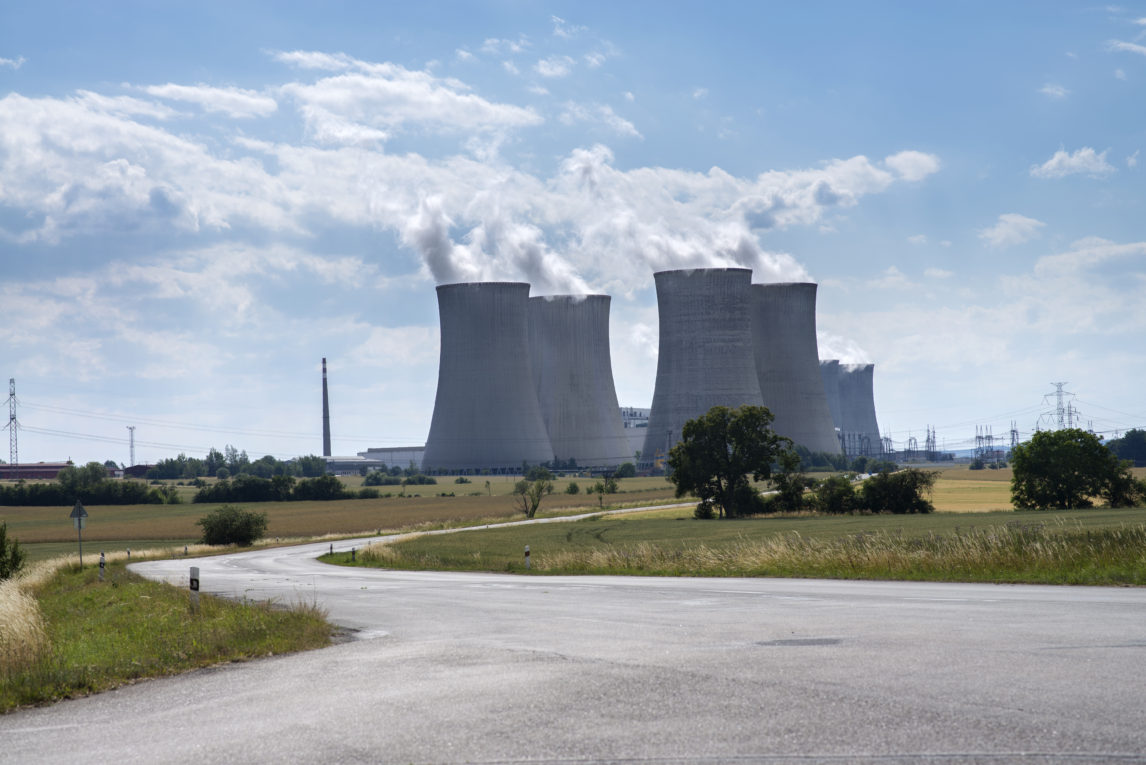For Immediate Release
August 9, 2016
Contact:
Jessica Azulay, Alliance for a Green Economy, (315) 480-1515, jessica@agreenewyork.org
Tim Judson, Nuclear Information and Resource Service, (212) 729-1169, timj@nirs.org
Watchdogs Issue Warning over Nuclear Safety as FitzPatrick Sale to Exelon is Announced
Groups criticize transfer of decommissioning fund to private company
FitzPatrick still not recovered from shutdown and leak in June; Nine Mile Point inspection report reveals several safety issues
Nuclear giants Entergy and Exelon announced an agreement today for the sale of the FitzPatrick nuclear reactor, a deal underwritten by a controversial rate hike to be imposed on New York’s electricity consumers and the transfer of a $700 million publicly controlled decommissioning fund into private hands.
The sale of FitzPatrick from Entergy to Exelon was announced today and celebrated by Governor Cuomo at a rally in Oswego County, where FitzPatrick is located. The sale was brokered in order to save the unprofitable reactor from closure. Entergy had planned to shutter the reactor, but Exelon now plans to take it over with the promise of $7.6 billion in subsidies over 12 years to FitzPatrick and Exelon’s other three reactors in upstate New York.
The subsidies have been heavily criticized by environmentalists, consumer advocates, and businesses alike over concerns that the unprecedented nuclear bailout would increase radiological contamination, increase the risk of nuclear accidents, and impose untenable costs on residents and businesses.
Now it has been revealed that the Cuomo administration plans to transfer FitzPatrick’s decommissioning fund over to Exelon. The fund is currently owned by the New York Power Authority (NYPA) and contains over $700 million in consumers’ money that was set aside when NYPA owned FitzPatrick.
“Public ownership over FitzPatrick’s decommissioning fund provides a safeguard to prevent Exelon from misusing money New Yorkers paid to ensure a responsible cleanup, and for the state to have some control over when and how that cleanup will happen after it retires,” said Tim Judson, Executive Director of the Nuclear Information and Resource Service. “Most states are not so lucky to have a way of reigning in nuclear owners who plan to mothball nuclear sites for decades, leaving the contamination and the waste to fester. It is folly for New York to give up this fund over to Exelon.”
Jessica Azulay, program director with Alliance for a Green Economy, said: “Governor Cuomo has truly given away the store. As if the billions of dollars of consumer money gifted in subsidies to the nuclear industry weren’t enough, now we find out that another $700 million in public assets will be handed to Exelon in order to sweeten the deal for their purchase of FitzPatrick. Is there no limit to the expense or risk that the Governor is willing to hoist on us in order to ensure Exelon buys FitzPatrick?”
Even as the FitzPatrick deal was announced, the aging reactor was still not up to full power since an electrical issue and oil spill shut it down in June. Nuclear Regulatory Commission told watchdogs that the issue was the plant’s Condensate Booster Pump C, which is experiencing vibrations and preventing the plant from operating at full power.
Meanwhile, the latest inspection report from Exelon’s neighboring Nine Mile Point reactor highlighted a number of serious safety problems including:
- A switchgear room flooding problem has gone unfixed for 12 years, exposing electrical systems to water.
- Two backup cooling systems have been inoperable under certain accident conditions because Exelon set the autostart points incorrectly.
- A worker was exposed to high levels of radiation from cleaning a contaminated valve without instructions or protective gear to limit exposure
These issues highlight the ongoing dangers posed by the upstate nuclear reactors and the lax enforcement by the Nuclear Regulatory Commission, which cited Nine Mile for the problems but imposed no fines or other penalties. Gov. Cuomo has raised similar concerns in regard to the Indian Point nuclear reactors near New York City, but he has remained silent on nuclear safety problems at upstate reactors.

